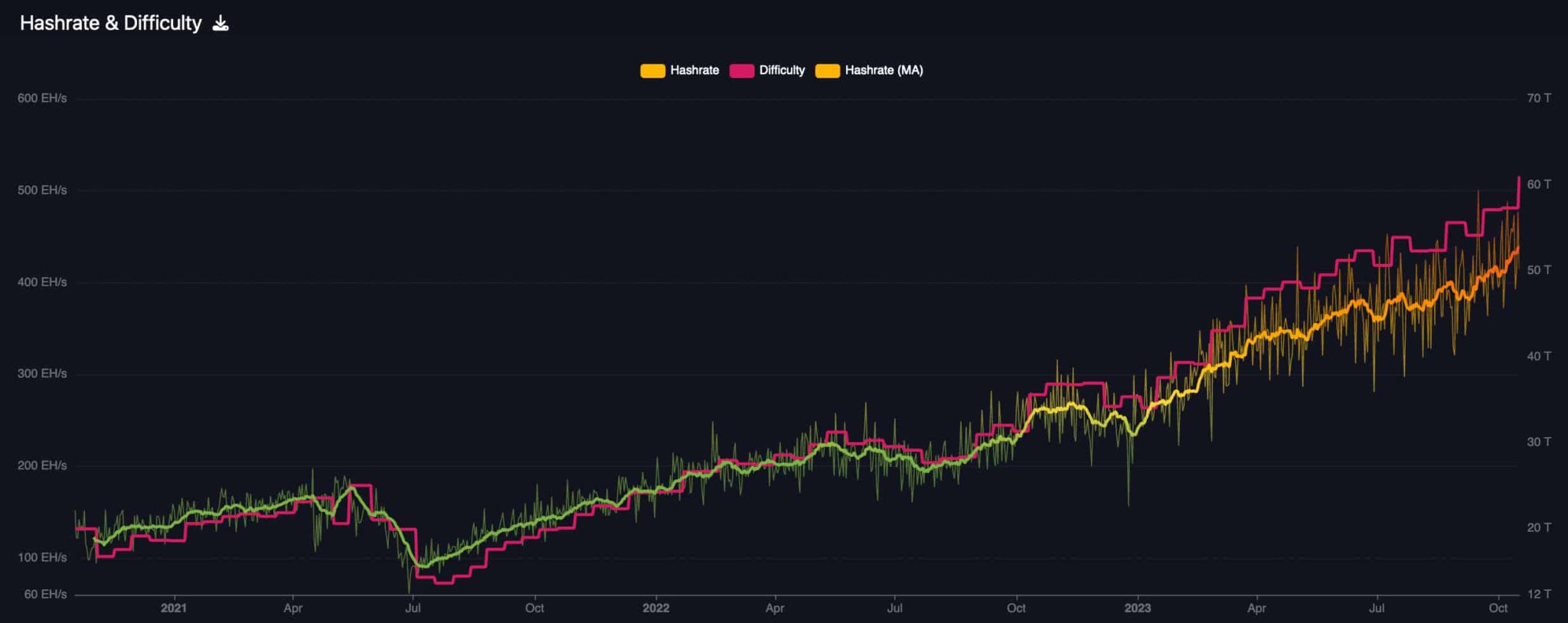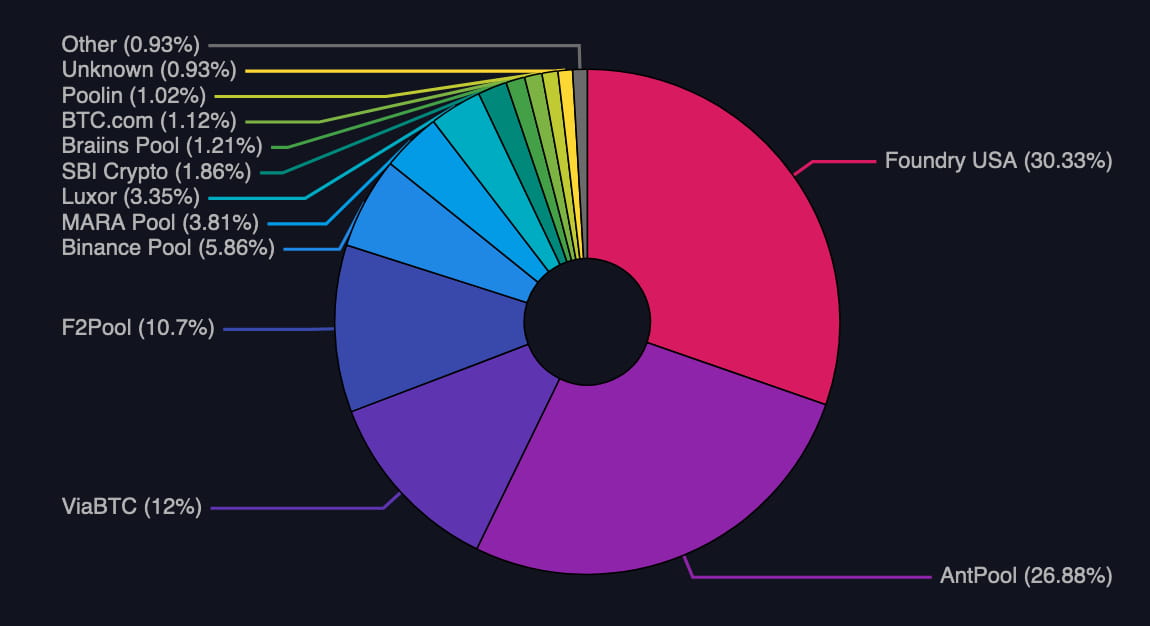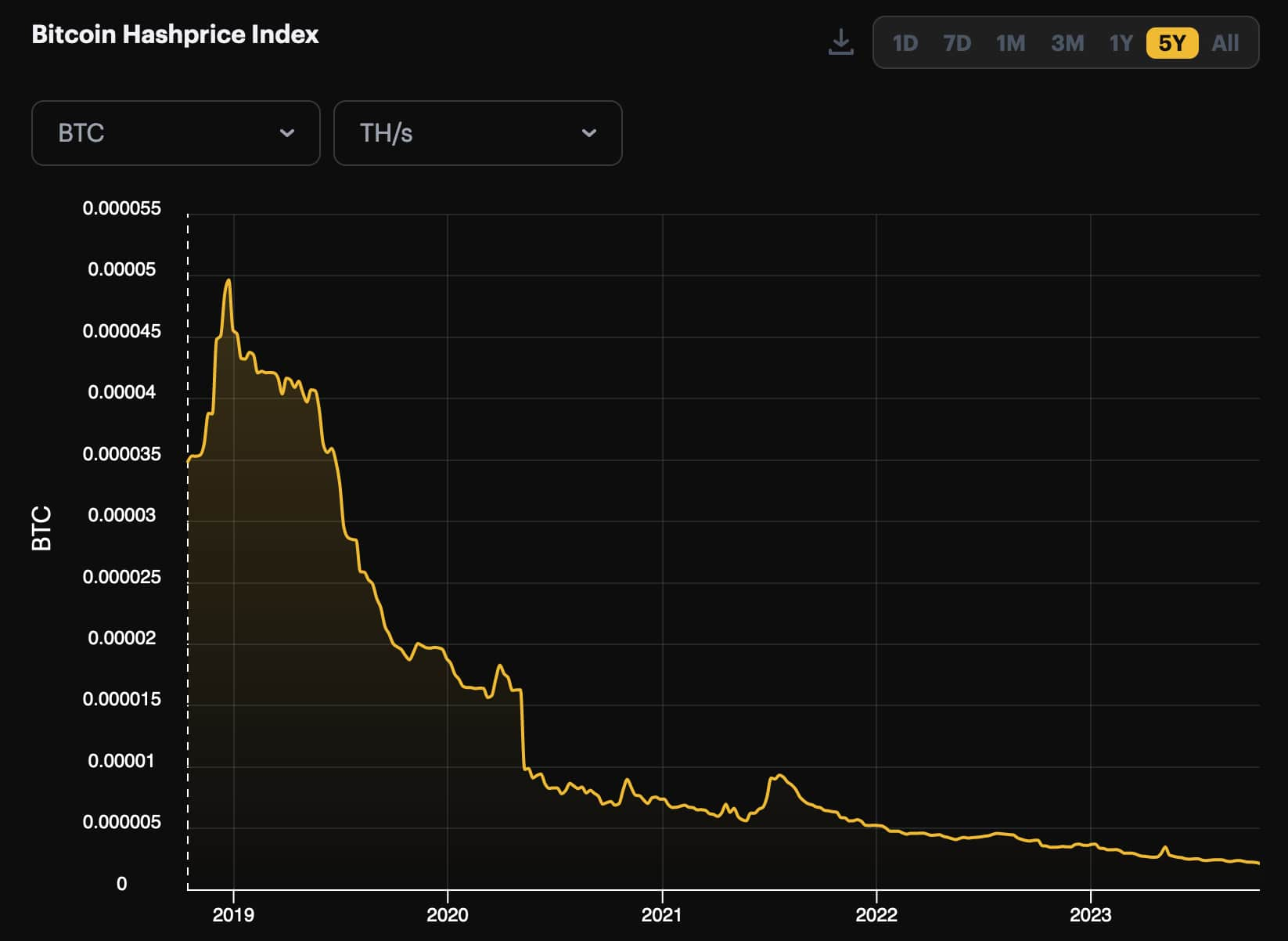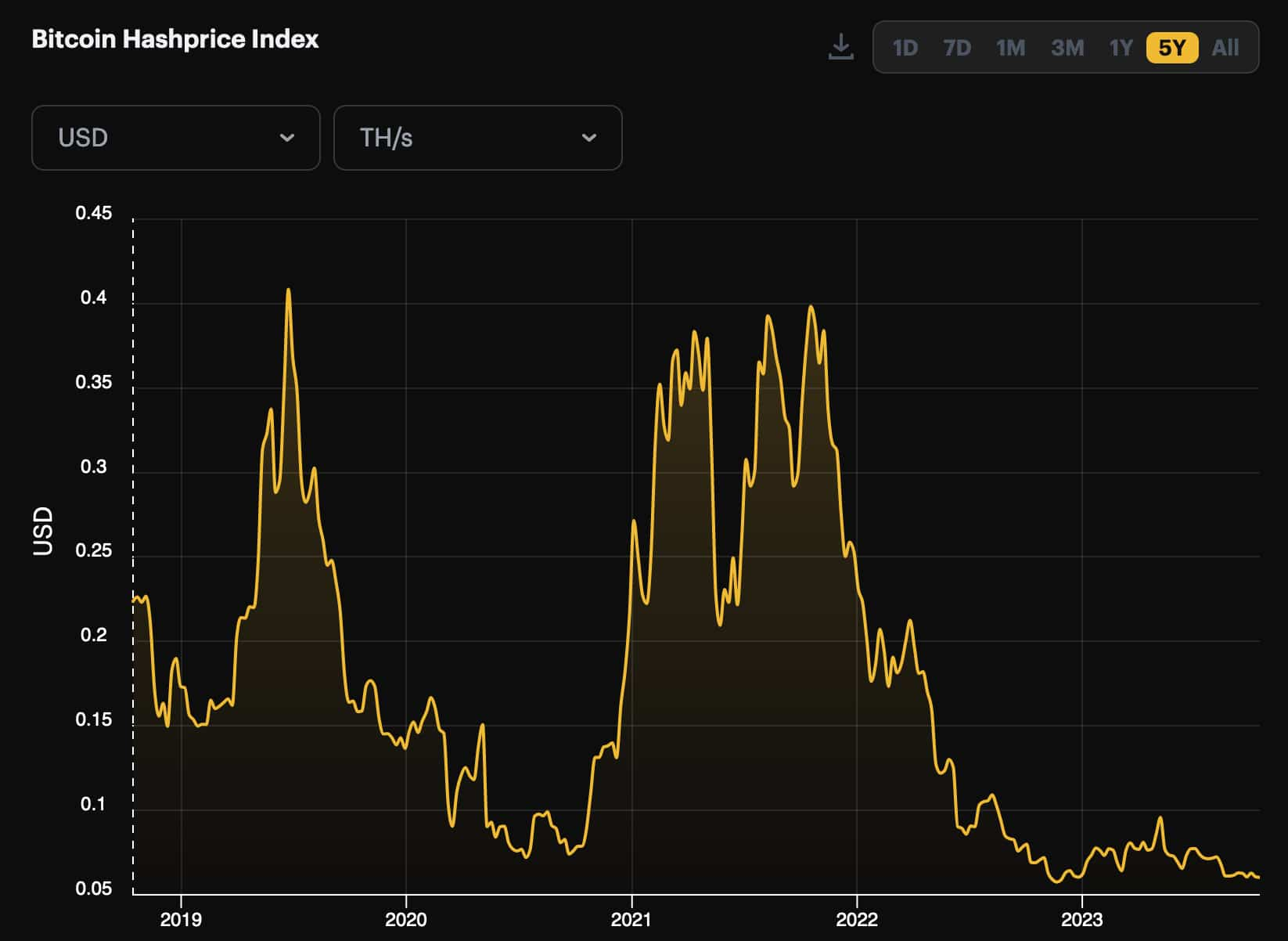Bitcoin (BTC) miners are constantly generating Proof of Work (PoW) in a highly competitive business to discover the next valid block. Recently, Bitcoin mining difficulty was adjusted to its all-time highs, which hardened the competition and business profitability.
In this discovery, the miner gets the right to collect the block subsidy of freshly created 6.25 BTC, add Bitcoin transactions to this block, and broadcast it to other nodes, confirming these transactions — including the one from the block subsidy.
Interestingly, the more work (or hashrate) a Bitcoin miner has on the network, the higher their chances of finding a valid block. In order to keep the block discovery in a 10-minute interval, the Bitcoin mining difficulty is adjusted every 2,016 blocks (around two weeks).
This creates a dynamic where in an increased hashrate environment, the protocol will require that even more hashrate is deployed in order to find the next block, making it more difficult to mine BTC. While a decreasing hashrate scenario will do the opposite, decreasing the mining difficulty.
Bitcoin mining difficulty reaches a new all-time high of 61.03 trillion hashes
In particular, the Bitcoin mining difficulty reached a new all-time high of 61.03 trillion hashes needed to mine a block, in the most recent difficulty adjustment on October 16.
Meanwhile, the current average daily network hashrate is at 450 EH/s, according to data retrieved by Finbold from mempool.space on October 17.

Notably, Bitcoin mining is becoming more difficult over time, as the largest pools continuously increase their hashrates — which also makes Bitcoin more centralized in a few mining pools, as exclusively reported by Finbold.

Additionally, part of this recent growing hashrate comes from AntPool, the second-largest Bitcoin mining pool fighting against Foundry USA to become the first in block discovery. Antpool is owned by Bitmain, the largest Bitcoin mining ASICs producer in the world, based in China.
Bitmain fired three of its employees on October 17, involved in disclosing their salaries to the public. The company had salary arrears, and the 2022 year-end bonus has not been paid yet, according to a report by BlockBeats.

Hashprice measures the expected return in BTC for each TH/s of PoW (or hashrate) a Bitcoin miner contributes to the network. It can also be used to measure the value in U.S. Dollars (USD), which is volatile due to considering the Bitcoin price in dollars.
Particularly, the Hashprice Index in USD has reached a 5-year low in November 2022, due to what is now considered the local bottom for this Bitcoin market cycle.
Nevertheless, the index is revisiting its lowest values after the constant increase in mining difficulty, at $0.06 per TH/s daily, and Bitcoin miners are again underwater.

This scenario creates more challenges for Bitcoin miners trying to compete in the mining industry and favors the already largest players or the ones with easier access to capital, ASICs, or cheap energy.




















































































get clomiphene without a prescription can you get clomiphene without insurance buy generic clomiphene tablets order generic clomiphene without rx order generic clomiphene without rxРіРѕРІРѕСЂРёС‚: clomid only cycle cost of clomid without insurance
This is a question which is forthcoming to my fundamentals… Many thanks! Faithfully where can I notice the acquaintance details for questions?
Greetings! Extremely serviceable recommendation within this article! It’s the crumb changes which will make the largest changes. Thanks a a quantity for sharing!
buy generic azithromycin for sale – tetracycline 250mg sale metronidazole for sale
buy semaglutide 14 mg for sale – cyproheptadine 4mg over the counter order generic periactin 4 mg
buy motilium 10mg sale – order domperidone 10mg generic flexeril order
propranolol cost – buy generic plavix buy methotrexate 2.5mg without prescription
oral azithromycin 500mg – order generic zithromax 500mg buy nebivolol without a prescription
buy amoxiclav generic – https://atbioinfo.com/ how to buy ampicillin
nexium tablet – https://anexamate.com/ esomeprazole for sale
warfarin for sale online – https://coumamide.com/ order losartan 25mg generic
mobic cheap – https://moboxsin.com/ buy mobic 15mg
prednisone usa – https://apreplson.com/ purchase prednisone generic
best pill for ed – fastedtotake natural ed pills
brand amoxil – comba moxi amoxil over the counter
buy diflucan 200mg without prescription – https://gpdifluca.com/ brand diflucan 100mg
buy escitalopram 10mg without prescription – https://escitapro.com/# lexapro brand
buy generic cenforce – https://cenforcers.com/# order cenforce 100mg online
generic cialis 20 mg from india – cialis vs tadalafil cheap cialis canada
tadalafil hong kong – tadalafil generic 20 mg ebay where to buy cialis in canada
order ranitidine 150mg without prescription – purchase zantac pill order zantac